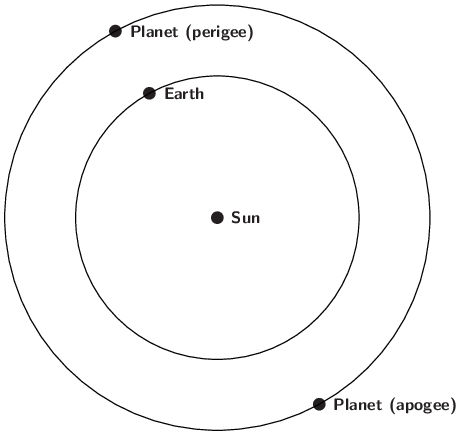[ Skywatchers ] [ Main Menu ]
48441
From: Eve, [DNS_Address]
Subject: Saturn Brightest Around September 8, 2024
|
Have you seen Saturn yet? Saturn is the most gasp-inducing planet when viewed through a telescope. And it’s currently providing its best views of 2024 as it races towards its September 8 opposition. That's when Saturn lies opposite the sun in our sky and is visible all night. Saturn looks starlike to the eye alone, appearing as as a golden-hued dot and shines steadily, as planets tend to do. Binoculars will enhance its color, and even a small telescope will let you glimpse Saturn’s rings. |
Responses:
[48443]
48443

From: Eve, [DNS_Address]
Subject: Re: Saturn Brightest Around September 8, 2024
|
Saturn & Earth in constellation Aquarius, Sun in constellation Leo EXCERPT: Saturn at opposition This event is visible to the naked eye from Ann Arbor. SUN, 08 SEP 2024 AT 00:27 EDT (04:27 UTC) Saturn will reach opposition, when it lies opposite to the Sun in the sky. Lying in the constellation Aquarius, it will be visible for much of the night, reaching its highest point in the sky around midnight local time. At around the same time that Saturn passes opposition, it also makes its closest approach to the Earth – termed its perigee – making it appear at its brightest and largest. The rings of Saturn Saturn's rings will appear very close to edge-on at this opposition. The graph below shows the changing inclination of Saturn's rings over time. The black line indicates their inclination to our line of sight from the Earth. A negative angle indicates that the north pole is tipped towards us, while a positive angle indicates that we see the south pole. An angle close to zero means that Saturn's rings appear close to edge on. The red line indicates the inclination of the rings to the Sun's line of sight to the planet. Interesting phenomena can occur when the rings are very close to edge-on, if the Sun illuminates one side of the rings, while we see the other. At such times, we see the unilluminated side of the rings. The Seeliger Effect For a few hours around the exact moment of opposition, it may be possible to discern a marked brightening of Saturn's rings in comparison to the planet's disk, known as the Seeliger Effect. This occurs because Saturn's rings are made of a fine sea of ice particles which are normally illuminated by the Sun at a slightly different angle from our viewing angle, so that we see some illuminated particles and some which are in the shadow of others. At around the time of opposition, however, the ice particles are illuminated from almost exactly the same direction from which we view them, meaning that we see very few which are in shadow. Observing Saturn At opposition, Saturn is visible for much of the night. When it lies opposite to the Sun in the sky, this means that it rises at around the time the Sun sets, and it sets at around the time the Sun rises. It reaches its highest point in the sky at around midnight local time. But even when it is at its closest point to the Earth, it is not possible to distinguish it as more than a star-like point of light without the aid of a telescope. A chart of the path of Saturn across the sky in 2024 can be found here, and a chart of its rising and setting times here. At the moment of opposition, Saturn will lie at a distance of 8.66 AU, and its disk will measure 19.2 arcsec in diameter, shining at magnitude 0.6. Its celestial coordinates at the moment it passes opposition will be: Object Right Ascension Declination Constellation Magnitude Angular Size Saturn 23h10m40s 7°39'S Aquarius 0.6 19.2" |
Responses:
None
[ Skywatchers ] [ Main Menu ]